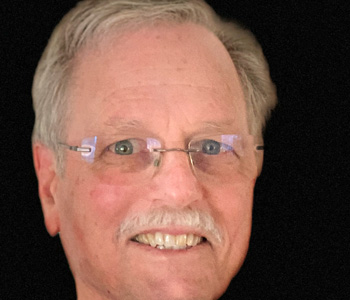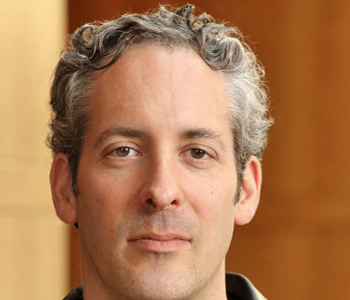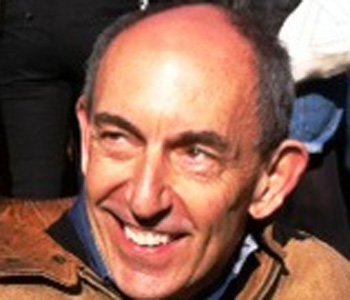Andie Tucher
Not Exactly Lying: Fake News and Fake Journalism in American History
Columbia University Press
384 pages, 6 x 9 inches
ISBN 9780231186353
Not Exactly Lying stands apart from the flood of recent writing on the phenomena of misinformation, disinformation, and journalistic deception. Donald Trump did not, as he claimed, invent the term “fake news.” But most scholars and commentators have acted as if he did, focusing overwhelmingly on the present and on the damage that false information has done to contemporary public life.
While that damage is very real, I take a longer and wider view, drawing on case studies to analyze how we got where we are today. I explore how the complex relationships between truth, journalism, newsmakers, and readers/audiences evolved over the centuries since 1690 when America’s first known newspaper, Publick Occurrences of Boston, included in its inaugural (and only) issue a fake news item claiming that Louis XIV of France was sleeping with his daughter-in-law. And I argue that the true danger to public life lies less in the fashionable scapegoat of fake news than in what I call “fake journalism”—the appropriation and exploitation by partisans or activists of the outward forms of authentic journalistic practice in order to lend credibility to falsehood.
For 200 years after Publick Occurrences there was no such thing as “authentic journalistic practice,” and newspapers played a variety of roles, only some of which had anything to do with information. Accurate intelligence about current events nestled in their columns alongside hyperpartisan disputation, humbugs, tall tales, fake interviews, propaganda, fiction, poetry, and the kind of reader-friendly embellishment that journalists themselves liked to call “faking.” No one expected that everything they read in the varied and jam-packed columns of a newspaper was true, but they usually felt more entertained than deceived when it wasn’t.
Around the beginning of the twentieth century, however, it became increasingly clear to news organizations, citizens, reformers, and others that journalism was failing to serve the public good. They began working to establish the principles and expectations that to this day define “real,” credible, professional journalism. They didn’t always live up to their own standards, of course; journalists did, and do, make mistakes, sometimes dire ones. But they sought to make the rules clear and to hold transgressors accountable. In a talk to students at the brand-new Columbia Journalism School in 1912, Ralph Pulitzer sought both to publicize those rules—a newspaper that prints a deliberate fake, he said, becomes a “degenerate and perverted monstrosity”—and to enlist the aspiring reporters to uphold the ideals of the profession they were about to enter.
Paradoxically, the birth of real journalism has also allowed for the growth and spread of fake journalism, as partisans, propagandists, and fraudsters figured out they could dress themselves up in their counterparts’ conventions, pretend to embrace their standards, and by their very presence undermine the credibility of good-faith journalistic work. As the mass media have grown ever more strongly entwined in the political system and as social media have penetrated ever deeper into our daily lives, so too has fake journalism, to the point where it has become an essential driver of the political polarization of public life.
The most contentious of the standards and conventions of “real” journalism, as I’ve found in my dual career as historian and journalist, has long been the ideal of objectivity. Having emerged in the early twentieth century, as part of the movement for journalistic reform, it was an ideal both professional and moral, a way for responsible journalists to make clear to the public that they were different from the sloppy, sensational newspapers so many readers were used to.
The whole idea of objectivity, however, has been misunderstood—and deeply controversial—ever since. Most people nowadays would define objective journalists by what they don’t do: they don’t acknowledge their own bias, they don’t go beyond a simplistic striving for “balance,” they don’t think critically. And, most people would add, objective journalists don’t do their job very well. More and more people are arguing that objectivity is disingenuous, artificial, and inadequate to the passion and mendacity of the times.
True enough—but only if by “objectivity” they mean journalists contorting themselves to deny they have emotions or blindly reporting “both sides” as if two sides are always equivalent. But that is not what the earliest supporters of objectivity had in mind. Most famously described by the progressive journalist and reformer Walter Lippmann in the 1920s, true objectivity is not an attitude but a process. Journalists, he said, should work like scientists, basing their reporting on critical thinking and reason; they should investigate systematically, rigorously test their own assumptions, and work to scrupulously and unemotionally verify the facts, like scientists would. If journalists did their job right, readers would be confident that the reporter had provided all the information they needed, not just the facts that might match the reporter’s own convictions or that the politicians wanted their constituents to believe.
We have now arrived at a paradoxical juncture where the kind of “real” mainstream news organizations that once saw objectivity as the way to reform journalism now find themselves under intense pressure to embrace a more openly subjective approach. That pressure often comes not just from readers and viewers but also from the news organizations’ own staff members. At the same time, many fake journalists have appropriated the language of the “real” news organizations, routinely claiming that they are the only ones presenting fact-driven, unbiased, objective journalism that can be trusted to tell the truth. That’s a dangerous place for a democracy.
The heart of the book consists of a series of case studies—some ugly, some disturbing, some embarrassing, a few humorous—that illustrate important moments of tension involving journalism, news consumers, and truth. I invite readers to explore some of those with an eye to what’s new to them and what feels old and familiar about how the truth has been told—and, sometimes, sold.
There was, for instance, unabashed fabrication. In the late nineteenth century some reporters insisted that it did not “debase their manhood,” as one put it, to “‘fake’ an interview” with a subject who didn’t want to answer their questions; the reporter’s job was to “get news,” while the reader expected to hear from newsworthy people. There was the manipulation of new technologies. Most of the customers who flocked to the motion-picture theaters showing “real battle scenes” from the Spanish American War down in Cuba would probably have been disappointed to learn that they were actually watching New Jersey National Guardsmen dressed up as U.S. soldiers and acting out dramatic charges filmed just across the river from Manhattan. But what did anyone expect? Movie cameras were just too big and clumsy to carry around on the field of battle!
There were accusations of fakery used to undermine and delegitimize journalism that was in fact accurate. During the Jim Crow era, the mainstream southern press brimmed with stories painting Black men as sexual predators against white women, and when the well-known Black activist and journalist Ida B. Wells began exposing those reports as lies, white editors dismissed her works as “Ida Wells fakes.” There was government skullduggery. The CIA, operating on the theory that no weapon against the Communist threat was out of bounds, set up front organizations to produce fake journalism that sought to damage the nation’s enemies. And now there are influencers, activists, and partisans, often but not always on the Right, who cloak falsehoods involving critical matters like vaccines and election security in the familiar language of fact-driven objectivity.
The tensions between the real and the fake unfolded differently in each case, and readers may find it intriguing to compare how some of them played out: who committed the fake, who profited from it, who justified it, who claimed the power to fight back against it, who carried the day in the end, and why.
In these hyperpolarized times it’s easy—and, yes, sometimes appropriate—to focus on journalism’s flaws and failures. It’s also easy to forget there’s a more affirmative view of journalism: as an essential tool of democracy that provides citizens with the information they need to understand what their government and their elected officials are doing and to hold them accountable. That view acknowledges the idealism of the First Amendment, the landmark exposés by courageous investigative reporters, the gutsy coverage of war and crisis, the dogged daily slog to get things right.
And now the pervasive fake claims by fake journalists that they are the only ones upholding traditional principles have made it more important than ever for the true professionals—the ones who strive to do honest work—to reclaim and repair the crucial distinction between themselves and the fakers. Not Exactly Lying ends with a robust defense of the increasingly beleaguered tradition of true objectivity, arguing that mainstream “real” media must publicly recommit themselves to the rigorous, fact-based, intellectually honest search for truth—wherever the evidence might lead.




We don't put paywalls. We don't distract you with ads. We don't sell your data.
Please help to keep this running!